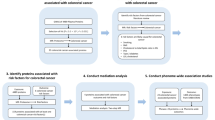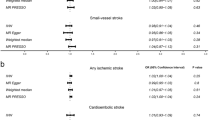Abstract
The value of the glutathione S-transferase (GST) null genotype in patients with arsenic poisoning has been recognized, but the conclusions of previous studies remain inconsistent. The objective of this study was to evaluate the relationship between GST mu 1 (GSTM1) and GST theta 1 (GSTT1) null genotype polymorphisms and susceptibility to arsenic poisoning. PubMed, Medline, Embase, Web of Science, China National Knowledge Infrastructure (CNKI), WanFang, and WeiPu databases were systematically searched for publications up to March 31, 2020. The quality of the studies was assessed using the Newcastle–Ottawa Quality Assessment Scale. The pooled odds ratios (ORs) and their 95% confidence intervals (CIs) were calculated to estimate the relationship between GSTM1 and GSTT1 null genotype polymorphisms and arsenic poisoning. The meta-analysis was conducted using STATA 14.0 software. Nine articles with 3324 subjects were included in the meta-analysis. A significantly negative correlation was observed between the GSTM1 null genotype and susceptibility to arsenic poisoning (OR = 0.731; 95% CI: 0.536–0.999; P = 0.049; I2 = 70.5%). There was no significant correlation between the GSTT1 null genotype (OR = 1.009; 95% CI: 0.856–1.189; P = 0.915, I2 = 36.8%) and GSTM1-GSTT1 double null genotype (OR = 1.105; 95% CI: 0.670–1.822; P = 0.695; I2 = 64.7%) and the risk of arsenic poisoning. Egger’s and Begg’s tests indicated no publishing bias. Compared with controls, individuals with the GSTM1 null genotype were less susceptible to arsenic poisoning. The GSTT1 single null genotype and GSTM1-GSTT1 dual-null genotype were not associated with the risk of arsenic poisoning. The GSTM1 single null genotype may have potential as a genotoxic biomarker to identify individuals who are not prone to arsenic poisoning, and as a reference for guiding the prevention of arsenic poisoning.



Similar content being viewed by others
References
International Agency for Research on Cancer (IARC) (1987) Overall evaluations of carcinogenicity: an updating of IARC Monographs Volumes 1 to 42. IARC Monogr Eval Carcinog Risks Hum Suppl 7:1–440
Majumdar KK, Guha Mazumder DN (2012) Effect of drinking arsenic-contaminated water in children. Indian J Public Health 56(3):223–236
Yu HS, Liao WT, Chai CY (2006) Arsenic carcinogenesis in the skin. J Biomed Sci 13(5):657–666
Rehman K, Fatima F, Waheed I, Akash MSH (2018) Prevalence of exposure of heavy metals and their impact on health consequences. J Cell Biochem 119(1):157–184
Mochizuki H, Yagi K, Tsuruta K, Taniguchi A, Ishii N, Shiomi K, Nakazato M (2016) Prolonged central sensory conduction time in patients with chronic arsenic exposure. J Neurol Sci 361:39–42
Basu A, Mahata J, Gupta S, Giri AK (2001) Genetic toxicology of a paradoxical human carcinogen, arsenic: a review. Mutat Res 488(2):171–194
Rossman TG (2003) Mechanism of arsenic carcinogenesis: an integrated approach. Mutat Res 533(1–2):37–65
Vahter M (2000) Genetic polymorphism in the biotransformation of inorganic arsenic and its role in toxicity. Toxicol Lett 112-113:209–217
Marcos R, Martínez V, Hernández A, Creus A, Sekaran C, Tokunaga H, Quinteros D (2006) Metabolic profile in workers occupationally exposed to arsenic: role of GST polymorphisms. J Occup Environ Med 48(3):334–341
Hernández A, Marcos R (2008) Genetic variations associated with interindividual sensitivity in the response to arsenic exposure. Pharmacogenomics 9(8):1113–1132
Ferreccio C, Smith AH, Durán V, Barlaro T, Benítez H, Valdés R, Aguirre JJ, Moore LE, Acevedo J, Vásquez MI, Pérez L, Yuan Y, Liaw J, Cantor KP, Steinmaus C (2013) Case control study of arsenic in drinking water and kidney cancer in uniquely exposed Norther Chile. American journal of epidemiology 178(5):813–818
Chanhom N, Udomsinprasert W, Chaikledkaew U, Mahasirimongkol S, Wattanapokayakit S, Jittikoon J (2020) GSTM1 and GSTT1 genetic polymorphisms and their association with antituberculosis drug-induced liver injury. Biomed Rep 12(4):153–162
Hayes JD, McLellan LI (1999) Glatathione and glutathione-dependent enzymes represent a coordinately regulated defence against oxidative stress. Free Radic Res. 31(4):273–300
Pan SX, Yang LQ (2006) Genetic polymorphism of glutathione S-transferase and related diseases in population. Chin Prev Med 7(4):365–368 (In Chinese)
Hayes JD, Strange RC (2000) Glutathione S-transferase polymorphisms and their biological consequences. Pharmacology 61(3):154–166
Chiou HY, Hsueh YM, Hsieh LL, Hsu LI, Hsu YH, Hsieh FI, Wei ML, Chen HC, Yang HT, Leu LC, Chu TH, Chen-Wu C, Yang MH, Chen CJ (1997) Arsenic methylation capacity, body retention, and null genotypes of glutathione S-transferase M1 and T1 among current arsenic-exposed residents in Taiwan. Mutat Res. 386(3):197–207
McCarty K, Chen Y, Quamruzzaman Q et al (2007) Arsenic methylation, GSTT1, GSTM1, GSTP1 polymorphisms, and skin lesions. Environ Health Perspect 115(3):341–345
Ghosh P, Basu A, Mahata J, Basu S, Sengupta M, Das JK, Mukherjee A, Sarkar AK, Mondal L, Ray K, Giri AK (2006) Cytogenetic damage and genetic variants in the individuals susceptible to arsenic-induced cancer through drinking water. Int J Cancer 118(10):2470–2478
Timmermans L, de Goede B, van Dijk SM, Kleinrensink GJ, Jeekel J, Lange JF (2014) Meta-analysis of sublay versus onlay mesh repair in incisional hernia surgery. Am J Surg 207(6):980–988
Kile ML, Houseman EA, Rodrigues E et al (2005) Toenail arsenic concentrations, GSTT1 gene polymorphisms, and arsenic exposure from drinking water. Cancer Epidemiol Biomarkers Prev 14(10):2419–2426
Lin GF, Du H, Chen JG et al (2007) Glutathione S-transferases M1 and T1 polymorphisms and arsenic content in hair and urine in two ethnic clans exposed to indoor combustion of high arsenic coal in Southwest Guizhou, China. Arch Toxicol 81(8):545–551
Liang B, Zhang A, Xi X et al (2007) Relationship between genetic polymorphisms in glutathione S-transferase M1, T1 and arsenic poisoning caused by coal-burning. Chin J Endemiol 26(1):6–8 (in Chinese)
Su L, Liu Q, Li T et al (2007) GSTM1, GSTT1 Gene polymorphisms and susceptibility to chronic arsenic poison. J Environ Health 24(11):851–853 (in Chinese)
Hsu LI, Chiu AW, Huan SK et al (2008) SNPs of GSTM1, T1, P1, epoxide hydrolase and DNA repair enzyme XRCC1 and risk of urinary transitional cell carcinoma in southwestern Taiwan. Toxicol Appl Pharmacol 228(2):144–155
Xie H, Wu S, Zheng Y (2012) Association between GSTT1, GSTM1 gene polymorphism and water-born endemic arsenism. Chin J Public Health 28(11):1421–1424 (in Chinese)
Yang J, Yan L, Zhang M, Wang Y, Wang C, Xiang Q (2015) Associations between the polymorphisms of GSTT1, GSTM1 and methylation of arsenic in the residents exposed to low-level arsenic in drinking water in China. J Hum Genet 60(7):387–394
Stang A (2010) Critical evaluation of the Newcastle-Ottawa scale for the assessment of the quality of nonrandomized studies in meta-analyses. Eur J Epidemiol 25(9):603–605
Higgins JP, Thompson SG, Deeks JJ, Altman DG (2003) Measuring inconsistency in meta-analyses. BMJ 327(7414):557–560
Dai Z, Feng C, Zhang W, Liu J, Cao X, Zhang H, Liu Y, Wang M, Liu X, Dai Z (2016) Lack of association between cytotoxic T-lymphocyte antigen-4 gene polymorphisms and lymphoid malignancy risk: evidence from a meta- analysis. Ann Hematol 95(10):1685–1694
Zhou L, Zheng Y, Tian T, Liu K, Wang M, Lin S, Deng Y, Dai C, Xu P, Hao Q, Kang H, Dai Z (2018) Associations of interleukin-6 gene polymorphisms with cancer risk: evidence based on 49,408 cancer cases and 61,790 controls. Gene 670:136–147
Begg CB, Mazumdar M (1994) Operating characteristics of a rank correlation test for publication bias. Biometrics 50(4):1088–1101
Egger M, Davey Smith G, Schneider M et al (1997) Bias in meta-analysis detected by a simple, graphicaltest. BMJ 315(7):629–634
Zhang ZJ, Hao K, Shi R, Zhao G, Jiang GX, Song Y, Xu X, Ma J (2011) Glutathione S-transferase M1 (GSTM1) and glutathione S-transferase T1 (GSTT1) null polymorphisms, smoking, and their interaction in oral cancer: a HuGE review and meta-analysis. Am J Epidemiol 173(8):847–857
Sherratt PJ, Pulford DJ, Harrison DJ et al (1997) Evidence that human class Theta glutathione S-transferase T1-1 can catalyse the activation of dichloromethane, a liver and lung carcinogen in the mouse; comparison of the tissue distribution of GST T1-1 with that of classes Alpha, Mu and Pi GST in human. Biochem J 326(3):837–846
Cotton SC, Sharp L, Little J et al (2000) Glutathione S-transferase polymorphisms and colorectal cancer: a HuGE review. Am J Epidemiol 15l(1):7–32
Lin HJ, Han CY, Bernstein DA, Hsiao W, Lin BK, Hardy S (1994) Ethnic distribution of the glutathione transferase Mu 1-1 (GSTM1) null genotype in 1473 individuals and application to bladder cancer susceptibility. Carcinogenesis 15(5):1077–1081
Li S, Xue F, Zheng Y, Yang P, Lin S, Deng Y, Xu P, Zhou L, Hao Q, Zhai Z, Wu Y, Dai Z, Chen S (2019) GSTM1 and GSTT1 null genotype increase the risk of hepatocellular carcinoma: evidence based on 46 studies. Cancer Cell Int 19:76
Oakley A (2011) Glutathione transferases: a structural perspective. Drug Metab Rev 43(2):138–151
Roy PD, Majumder M, Roy B (2008) Pharmacogenomics of anti–TB drugs–related hepatotoxicity. Pharmacogenomics 9(3):311–321
Strange RC, Jones PW, Fryer AA (2000) Glutathione S-transferase: genetics and role in toxicology. Toxicol Lett 112-113:357–363
Thier R, Wiebel FA, Hinkel A, Burger A, Brüning T, Morgenroth K, Senge T, Wilhelm M, Schulz TG (1998) Species differences in the glutathione transferase GSTT1-1 activity towards the model substrates methyl chloride and dichloromethane in liver and kidney. Arch Toxicol 72(10):622–629
Sprenger R, Schlagenhaufer R, Kerb R, Bruhn C, Brockmoller J, Roots I, Brinkmann U (2000) Characterization of the glutathione S-transferase GSTT1 deletion: discrimination of all genotypes by polymerase chain reaction indicates a trimodular genotype-phenotype correlation. Pharmacogenetics 10(6):557–565
Löf A, Johanson G, Rannug A, Warholm M (2000) Glutathione transferase T1 phenotype affects the toxicokinetics of inhaled methylchloride in human volunteers. Pharmacogenetics 10(7):645–653
Adonis M, Martínez V, Marín P, Gil L (2005) CYP1A1 and GSTM1 genetic polymorphisms in lung cancer populations exposed to arsenic in drinking water. Xenobiotica 35(5):519–530
Chung CJ, Huang CY, Pu YS, Shiue HS, Su CT, Hsueh YM (2013) The effect of cigarette smoke and arsenic exposure on urothelial carcinoma risk is modified by glutathione S-transferase M1 gene null genotype. Toxicol and Applied Pharmacology 266(2):254–259
Funding
This study was supported by grants from the National Natural Science Foundation of China (grant no. 81773367) and Scientific Research and Practice Innovation Fund for Postgraduate of Harbin Medical University (YJSKYCX2019-18HYD).
Author information
Authors and Affiliations
Contributions
Baiming Jin and Siyuan Wan were the principal investigators of this paper. Baiming Jin, Siyuan Wan, and Kewei Wang developed the hypothesis and study design, and supervised this study. All authors contributed to the study concept and design, analysis, and interpretation of the data and drafted or critically revised the manuscript for important intellectual content. All authors approved the final manuscript for submission.
Corresponding author
Ethics declarations
Conflict of Interest
The authors declare that they have no conflict of interest.
Additional information
Publisher’s Note
Springer Nature remains neutral with regard to jurisdictional claims in published maps and institutional affiliations.
Baiming Jin and Siyuan Wan are co-first authors
Rights and permissions
About this article
Cite this article
Jin, B., Wan, S., Boah, M. et al. GSTM1 and GSTT1 Null Genotype Polymorphisms and Susceptibility to Arsenic Poisoning: a Meta-analysis. Biol Trace Elem Res 199, 2085–2095 (2021). https://doi.org/10.1007/s12011-020-02325-2
Received:
Accepted:
Published:
Issue Date:
DOI: https://doi.org/10.1007/s12011-020-02325-2




